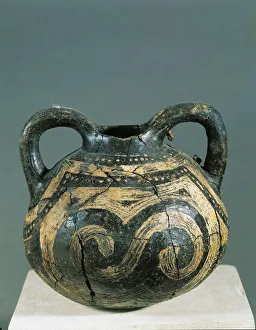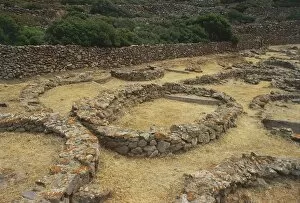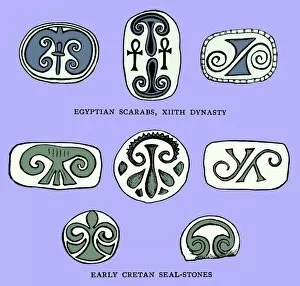Second Millennium Bc Collection (page 3)
The second millennium BC was a time of great cultural and artistic achievements, as seen in various ancient civilizations around the world
All Professionally Made to Order for Quick Shipping
The second millennium BC was a time of great cultural and artistic achievements, as seen in various ancient civilizations around the world. In Egypt, the rich Egyptian creation myth unfolded, with gods and goddesses shaping the world. The Talaiot at Talati de Dalt in Menorca, Balearic Islands, Spain stands tall as a testament to the advanced architectural skills of this era. Moving back to Egypt, the ceiling of the hypostyle hall at Torre d en Galmes reveals intricate designs that transport us to a bygone era. Statuary groups like Pendua and his wife Nefertari captivate us with their lifelike limestone forms. Delving deeper into Egyptian history, we encounter fascinating details on statues such as Thutmose III's before 1479-circa 1425 B. C masterpiece from Luxor's Ancient Thebes Valley of Kings Tomb of Horemhab. These sculptures provide glimpses into royal life during this period. Illustrations depicting rural daily life take us beyond palaces and tombs. We witness scenes of fowl plucking and grape harvesting - activities that connected people to nature even then. Egyptian art also embraced mythology; murals featuring Anubis at Tomb of Horemheb in Ancient Thebes' Valley of Kings showcase religious beliefs intertwined with artistic expression. Traveling further west within Egypt's borders brings us to Sheikh Adn el-Qurna where Ramos' tomb boasts captivating wall drawings that depict stories lost in time but preserved through these remarkable artworks. Beyond Egypt lies Knossos in Crete, Greece - home to magnificent structures like the Palace Of Minos. Close-ups reveal stunning murals adorning palace walls while Queen's Megaron dazzles visitors with its dolphin frescoes – an ode to both artistry and marine life appreciation. As we explore these archaeological sites across different lands during the second millennium BC, we are transported back thousands of years, marveling at the creativity and ingenuity of our ancient ancestors.















